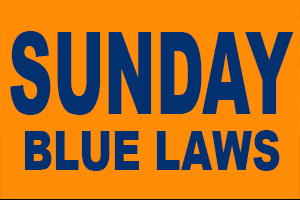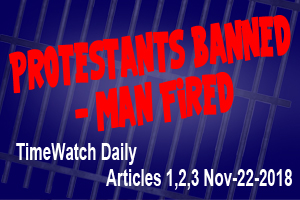
A Line of Separation – Part 3
TimeWatch Editorial
May 23, 2016
At the end of our editorial dated May 19, 2016 entitled ‘A Line of Separation Part 2,” we promised to reveal the sourcing of the new evangelical position embraced by some of the Seventh Day Adventist Church. We will here fulfill that promise. Russell Roland Standish, in his work entitled: “A History of Questions on Doctrine Fidelity or Compromise?” Says the following:
“In 1957 Questions on Doctrine, hot off the Review and Herald Publishing Association press, bearing the imprimatur of the General Conference President, Elder R. R. Figuhr, set forth certain tenets of the New Theology, proclaiming them to be faithful to our old established principles of faith, now expressed in new and clearer language.” Russell Roland Standish, “A History of Questions on Doctrine Fidelity or Compromise?”
First then, what is this book, Questions on Doctrine and why was it needed? This book was published in 1957 to strengthen the relationship between Adventists and Evangelicals. The book ultimately generated greater acceptance of the Adventist church within the evangelical community, where it had previously been widely regarded as a cult. However, it also proved to be one of the most controversial publications in Adventist history. The introduction to the book, on page 7 says:
“This book came into being to meet a definite need. Interest concerning Seventh-day Adventist belief and work has increased as the movement has grown. But in recent years especially, there seems to be a desire on the part of many non-Adventists for a clearer understanding of our teachings and objectives. Uncertainty regarding our basic beliefs is abundantly evident in much of the literature published concerning us. There are already many books purporting to give the story of this people. Recently, however, one of the large Protestant publishing houses here in the United States planned the production of still another book. An author of several works dealing with the history and beliefs of certain religious groups was requested to produce this new book, the purpose of which was to present a general review of our history and belief. It was to be an objective analysis, with particular emphasis in those areas wherein Adventist teachings differ from some other Christian groups.” Questions on Doctrine, page 7.Copyright © 1957 By The Review And Herald Publishing Association
Two of the men mentioned above who were referred to as being “part of many non-Adventists for a clearer understanding of our teachings and objectives,” were Donald Barnhouse and Walter Martin. Listen to how Russell Roland Standish describes these two men:
“Both Donald Barnhouse and Walter Martin expressed opposition to every one of our distinctive doctrines. This was evident AFTER their dialogues in 1955, 1956 with our General Conference representatives, and even in the Eternity issue of September, 1956 which incredibly delighted many Church leaders.64 It is astounding that the men who met with these two Evangelicals did not perceive that attempting to alter our doctrines in order to please such men was a design unfitting for pastors of their high calling.” Russell Roland Standish, “A History of Questions on Doctrine Fidelity or Compromise?” page 5.
In other words therefore, the development of the book was intended to be well thought of by Barnhouse, Martin and others. In order to accomplish this, it became necessary to adjust our traditional understanding of the fundamentals of our faith in order to meet with the approval of the evangelicals.
“Questions on Doctrine effectively removed the barriers previously erected by Church leadership against the acceptance of a number of the doctrines promulgated by the proponents of the New Theology. These had been considered earlier by Church leadership to be contrary to Biblical principles of faith. These leaders had judged that to accept these perceived errors would have disqualified us from being identified as a chosen generation and divert God’s church from the sole mission for which it was established – to bear God’s last and greatest message of love to every sinner – the Three Angels’ Messages.” Russell Roland Standish, “A History of Questions on Doctrine Fidelity or Compromise?” page 6.
What was ultimately the result of all this?
- Those close to the development of Questions on Doctrine remained silent.
- The support of the General Conference President was accepted as evidence of Questions on Doctrines veracity.
- Men most qualified to evaluate truth, including Elder Andreasen, were provided no input into Questions on Doctrine.
- Punitive action was taken against men who dared to oppose the New Theology teachings. Many ministers and laypeople silenced their concerns rather than invoke ecclesiastical penalties.
- Those refusing to accept the debasing of the faith were belittled and publicly denigrated, accused of disloyalty, changing doctrines and denounced as schismatics.
- In 1980 in a most acrimonious session of a General Conference Quinquennial meeting, the Twenty-seven Fundamentals were voted, without full worldwide examination. Some of the Fundamentals were crafted with deliberately shaded meanings and omitted salient doctrines which were judged to be in opposition to the New Theology.
- Our denominational publications have served as mediums for the promotion of the tenets of the New Theology.
- The alterations in doctrine were never placed before a General Conference Session. Russell Roland Standish, “A History of Questions on Doctrine Fidelity or Compromise?” page 6.
Today, the debate has been effectively silenced. Those who retain a traditional view of Adventism are few. But soon the Spirit of the Lord will rise to shake terribly the church, and hearts will again be drawn to the fundamentals of truth.
Cameron A. Bowen







